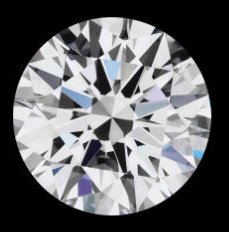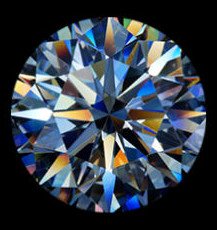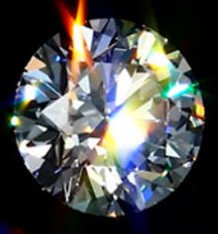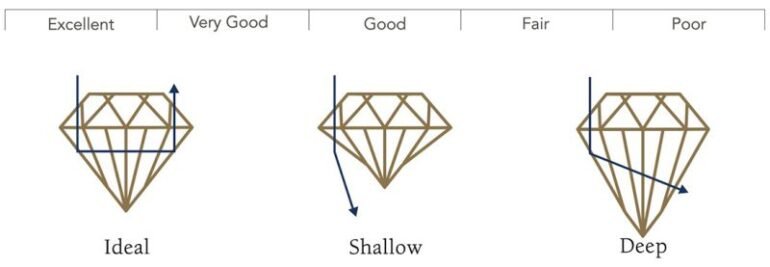100% Lab Grown Diamonds | Ethically Sourced | Budget-Friendly | Beautifully Crafted

Diamond Cut
- Home
- Page
Diamonds are renowned for their ability to transmit light and sparkle so intensely. We often think of a diamond’s cut as shape (round, heart, oval, marquise, pear), but what diamond cut actually does mean how well a diamond’s facets interact with light. Precise artistry and workmanship are required to fashion a stone so its proportions, symmetry and polish deliver the magnificent return of light only possible in a diamond.
Diamonds are considered the world’s most precious gemstones.
Achieving the best cut for a diamond reflects in the stone’s final beauty and value. And of all the diamond 4Cs, it is the most complex and technically difficult to analyze. To determine the cut grade of the standard round brilliant diamond – the shape that dominates the majority of diamond jewelry – GIA calculates the proportions of those facets that influence the diamond’s face-up appearance. These proportions allow GIA to evaluate what the best cut for a diamond is, by studying how successfully a diamond interacts with light to create desirable visual effects, such as:

Brightness
A diamond’s brilliance is the brightness of the white light reflection. When looking at a diamond face-up under light, it should reflect an abundance of white light. A diamond that’s not symmetrical, is cut too deep or too shallow, for example, looks dull instead of brilliant.

Fire
A diamond’s fire is the amount of colored light that reflects off of the table and facets. Well-cut diamonds not only have brilliance but fire too. When looking at the diamond face-up under light—especially daylight—you should see colored light bouncing off of the diamond. If the diamond doesn’t exhibit colored light reflection, the diamond has a low amount of fire.

Scintillation
Scintillation of a diamond refers to the flashes of sparkle when light moves on the diamond’s table and facets. The scattering of light resembles a sparkle and is caused by the light and dark areas on the diamond’s surface. A diamond with a large amount of scintillation is more desirable. A diamond without much scintillation can appear dull.
Diamond Cut Scale
In GIA’s system, each component is assessed individually, taking into account the relative importance of that component in the overall cut quality of the diamond. Each cut grade, based on a relative scale from Excellent to Poor, represents a range of proportion sets and face-up appearances. There are many different proportion sets that produce attractive diamonds.

Good : Well cut diamonds that capture light and possess high degrees of sparkle. Good cut diamonds have some light leakage, but overall shine bright. These diamonds can have noticeably larger or even smaller measurements than perfectly cut diamonds of the same shape. Cutters may intentionally cut to Good proportions to achieve a particular look or style. The top 25% of diamonds have a Good cut grade. Good cut diamonds can be a good blend of value and size, however be careful and always ask a gemologist to assess the particular diamond for you before you make a decision.
Very Good : Very well cut diamonds that capture almost all the potential of the diamond. Very brilliant with minimal light leakage. Diamonds cut often intentional cut to achieve a Very Good grade so that can improve the other characteristics of the diamond such as Color, Clarity or Carat. The top 15% of gemstone quality diamonds are Very Good cut. Very Good cut diamonds can be a great choice if looking maximize value on the other factors.
Excellent : The highest grade representing the top diamonds in the world. Diamonds with an Excellent cut grade are masterfully crafted and precisely cut to unleash the maximum sparkle and brilliance of a diamond. Little or no light leakage occurs as light passes through a diamond. This premium category represents the top 3% of all diamonds. Excellent cut diamonds are increasing with improvements in manufacturing technology. An excellent cut diamond is always a good choice regardless of diamond shape and size.
Diamond Cut History
Within nature and in their rough state, an unpolished diamond looks significantly different than a polished diamond. In it’s rough state, diamonds are not commonly used in jewelry. Initially, diamonds were simply polished in their natural shape to reveal some of the sparkle within. As years went by, cut and polish techniques were improved to enable more light to refract and reflect within the diamond. One common diamond cut that developed in the 14th century was the point cut, in which the diamond simple took the shape of a triangle placed upon an inverted triangle. This closely mimicked its shape in nature. Over time the importance of a culet and table was realized so that the diamond would have a more palatable shape for jewelry. However, these advancements did not create the sparkle, fire, and scintillation that is seen in modern cut diamonds.
In 1476, a master diamond cutter experimented with adding triangular facets to diamonds to unleash their sparkle. Thus the modern diamond was on its way to being shaped and formed. This developed into the rose or antique cut which has large and open facets that may not be symmetrical. The asymmetry is a result of diamonds being cut to preserve weight as well as hand-cutting techniques. Eventually in the 1900s a master diamond cutter named Tolkowsky acertained better diamond proportions taking sparkle and fire into consideration to produce a diamond with extraordinary brilliance. The modern brilliant cut diamond is a result of his efforts and research. Over time, diamond cut became standardized due to the efforts of diamond cutters to adhere to similar practices and diamond cut grades. Today, diamonds are machine cut to ensure maximum precision. Varying grades can be the result of the nature of the rough diamond as well as derire to preserve carat weight and minimize the appearance of inclusions.
Factors that Affect a Diamond's Cut
The most important factor in a diamond’s value and price is its Cut quality. Many elements are involved in Cut quality including its proportions, facets, finishing details and ability to reflect light. The better these characteristics are as a whole, the higher the quality of the diamond, and in return, the higher the price. While Color and Clarity play a role in a diamond’s beauty, Cut is the most critical of the 4Cs.
Here are the main factors that affect the price of a diamond :
- Proportions (table, width, depth)
- Symmetrical diamond’s facets (the mirrors, windows and steps of a diamond)
- Brilliance (brightness of white light reflection)
- Fire (dispersion of colored light)
- Scintillation (the flashes of sparkle when light moves)
- Finishing details (permanent treatment and polishing)
Factors for Determining Diamond Cut Quality
Because Diamond Cut is an enormous element in determining the beauty and brilliance of any diamond, there are some complexities. Many factors play a role in how a diamond’s cut quality is determined.
The main factors impacting Diamond Cut Quality are:
- Proportions: the ratios and sizes of the diamond’s depth, width and table
- Symmetry: precision of the facets, mirrors, windows and steps
- Polish: the shine and glow of the diamond surface
When you’re looking to see how well-cut diamonds are, take note of how their facets and angles reflect light. Specifically, note how bright and sparkly the light return is when placed under a normal lamp. When a diamond is poorly cut (even if it has a high Color or Clarity grade), light will not reflect as well back to your eyes, making it a duller, more lifeless diamond.

